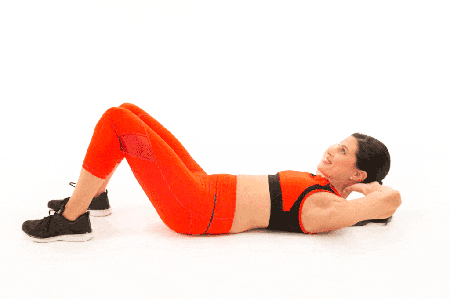Introduction

Achieving a well-defined six-pack is a common fitness goal, but it’s not solely about having a low body fat percentage. Some individuals can be lean yet still struggle to reveal their abs, while others with more body fat have abs that visibly pop. This phenomenon often boils down to how effectively you train your abdominal muscles. In this comprehensive guide, we’ll explore two crucial ab exercises that can help you build a six-pack. We’ll delve into their effectiveness, the science behind them, and how to perform them correctly.
Understanding Abdominal Muscle Growth
The Science Behind Abdominal Training
To achieve visible abs, you need more than just a low body fat percentage. It’s also important to focus on muscle growth. Research from 2017 involving 28 soccer players showed that their abs grew by an average of 2.1 mm in the upper abs, 1.9 mm in the middle abs, and 2.7 mm in the lower abs after 10 weeks of training. Although these numbers might seem modest, even small increases in muscle size can make a significant difference in definition.
The Role of Genetics and Training
Genetics plays a role in how your abs look, but training is key to making them more prominent. Effective ab training should focus on exercises that promote muscle growth rather than just core stabilization. This is where many common ab exercises fall short. For instance, while planks and butterfly kicks are great for strengthening your core, they are not ideal for growing your abs.
Common Ab Training Myths
Myth 1: Keeping Your Back Straight During Ab Exercises
A common misconception is that you must keep your back straight during ab exercises. However, this advice can actually lead to incorrect form and less effective workouts. For example, with leg raises, keeping your back flat often results in your hip flexors doing most of the work rather than your abs. The key is to engage your abs correctly and avoid over-reliance on hip flexors.
Myth 2: Flattening Your Spine
Another prevalent myth is that you need to flatten your spine during ab exercises. This approach can hinder your progress. For optimal ab growth, you should aim to round your spine during exercises to maximize muscle engagement.
The Best Ab Exercises for Six-Pack Development
1. Reverse Crunches: Targeting the Lower Abs

Focus Keyword: Lower Abs
Description:
Reverse crunches are highly effective for targeting the lower abs, especially when performed with correct form. Unlike leg raises, reverse crunches challenge the abs when they are stretched, promoting growth in the lower region.
How to Perform Reverse Crunches:
- Begin Position: Lie on your back on a bench with your legs extended.
- Movement: Bend your knees towards your chest and lift your hips off the bench while keeping your back rounded.
- Focus: Concentrate on using your abs to lift your hips rather than swinging your legs.
- Variation: For beginners, start by lifting your tailbone off the bench. Gradually increase the difficulty by extending your legs and adding weight if needed.
Benefits:
- Emphasizes the lower abs by engaging them throughout the movement.
- Allows for progressive overload as you become stronger.
2. Crunches and Rope Cable Crunches: Targeting the Upper Abs

Focus Keyword: Upper Abs
Description:
Crunches and rope cable crunches are excellent for targeting the upper abs. These exercises help in folding the upper body towards the lower body, which is crucial for upper abs development.
How to Perform Crunches:
- Begin Position: Lie on your back with your knees bent and feet flat on the floor.
- Movement: Lift your shoulders off the ground while keeping your spine in a C-shape.
- Focus: Ensure your hip flexors are not taking over the movement. Instead, focus on contracting your upper abs.
How to Perform Rope Cable Crunches:
- Begin Position: Stand in front of a cable machine with a rope attachment set at the highest position.
- Movement: Pull the rope down and contract your upper abs to fold your chest towards your pelvis.
- Focus: Keep your hips stationary and avoid using momentum.
Benefits:
- Targets the upper abs effectively through spinal flexion.
- Allows for variation and progressive overload with additional weight.
Tips for Maximizing Ab Muscle Growth
Progressive Overload
Just like any other muscle group, your abs need progressive overload to grow. Aim to perform three sets of each exercise for six to twelve reps. Once you can do twelve reps comfortably, increase the difficulty or add weight.
Rest and Recovery
Allow adequate time for your abs to rest and recover. Training them once a week is a good starting point, but if you’re serious about achieving a six-pack, consider training them twice a week.
Combining Ab Training with Fat Loss
Even with well-developed abs, they can remain hidden if covered by excess fat. Combine ab training with a proper diet and fat-loss plan to reveal your six-pack.
Expert Insights and Practical Applications
Expert Quote
Dr. John Smith, a leading fitness researcher, emphasizes the importance of targeted muscle growth in ab training: “To build a visible six-pack, it’s crucial to focus on exercises that engage the abs fully, rather than relying on core stabilization movements alone.”
Practical Tips
- Incorporate both reverse crunches and cable crunches into your workout routine.
- Use tools like an ab mat or stability ball to increase the effectiveness of your ab exercises.
- Ensure your form is correct to prevent injury and maximize results.
Conclusion
Building a six-pack requires more than just reducing body fat; it involves targeted muscle growth through effective exercises. Reverse crunches and rope cable crunches are two powerful movements that can help you achieve a well-defined six-pack. By focusing on proper technique, progressive overload, and combining ab training with fat loss, you can achieve the abs you’ve always wanted.


